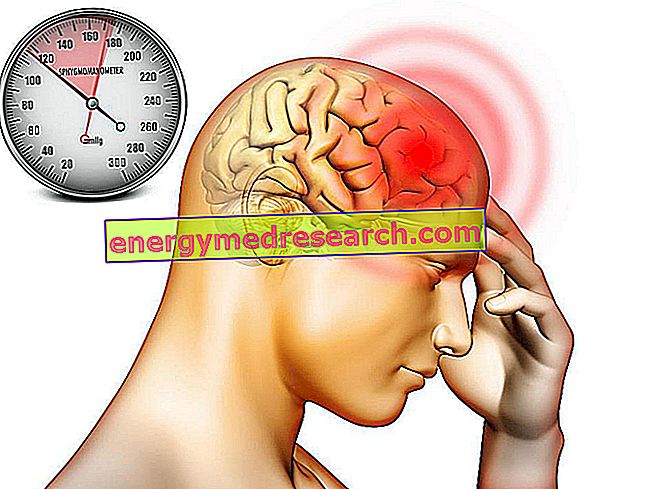Generality
The clavicle is the long bone, located in the antero-posterior part of the thorax, which connects the handlebar of the sternum with the acromion of the scapula.

The anatomists recognize three main regions: the body, the sternal end and the achromial end.
The body is the central portion of the clavicle; here the insertions of different muscles and fundamental ligaments of the human body take place.
The sternal end is the portion that articulates the clavicle to the sternum.
Finally, the achromial end is the portion that articulates the clavicle at the scopola.
The clavicle provides support to the arm and to the scapula, allows a wide range of movements with the upper limb, protects nerves and blood vessels directed to the upper limb and, finally, transmits to the axial skeleton the impacts received from the arm.
What is the clavicle?
The clavicle is that long S-shaped bone, located in the antero-posterior part of the thorax, which connects the sternum to the scapula .
Anatomy
The clavicle is an even bone that, at a frontal view, is convex medially and concave laterally.
The anatomy experts divide it into three main regions: the body (or diaphysis), the sternal end (or medial epiphysis) and the acromial end (or lateral epiphysis).

BODY OR DIAPHYSIS
The body is the central portion of the clavicle.
On its upper face, the sternocleidomastoid muscle is inserted, medially (ie towards the sternum), and the deltoid and trapezius muscles, laterally (therefore in the direction of the scapula).
If the deltoid and trapezius muscles are somewhat known, the sternocleidomastoid muscle is generally unknown to most: it is the muscular element that allows the head to flex and tilt laterally, turning it from the opposite side.
On the lower face of the clavicular body, in an intermediate position, there is the insertion of the subclavian muscle . Small and triangular in shape, the subclavian muscle allows the shoulder to be lowered and provides protection for the brachial plexus and subclavian blood vessels.
On the anterior margin of the clavicular body (ie on the front), the pectoralis major muscle is attached, medially, and (again) the deltoid muscle, laterally.
Finally, on the posterior margin (ie behind), the sternocleidomastoid muscle is inserted, medially, and the trapezius muscle, laterally (NB: like the deltoid, these muscles attach to the clavicle in several positions).
End? STERNAL OR MEDIUM EPIFYTE
The sternal end has a broad facet, which, fitting into a special depression in the sternum, attaches the clavicle to the latter.
The combination "sternal extremity of the clavicle - sternum" forms the sternoclavicular joint .
On the lower surface of the sternal extremity, there is an oval and rough concavity, which inserts into the costoclavicular ligament . The costoclavicular ligament is one of the ligaments that constitute the sternoclavicular joint.
Clearly, the name "sternal end" derives from the relationship between the medial part of the clavicle and the sternum.
The region of the sternum involved in the sternoclavicular joint is the so-called dumbbell .
The handlebar of the sternum is the upper part of the sternum; it has a trapezoidal shape and hosts the first two pairs of costal cartilages (to which the first two pairs of ribs are joined).
The sternum is completed by the regions known as: sternal body and xiphoid process .
End? ACROMIAL OR LATERAL EPIFYTE
The achromial end has a small facet, which, with another similar region located on the acromion of the scapula, forms the so-called acromioclavicular joint .
Acromion is that important bone process, which continues the spine of the scapula and forms a sort of front projection hook.
On the lower edge of the achromial end, the insertions of two fundamental ligaments take place: the conoid and the trapezoid . The conoid ligament and the trapezoid ligament connect the clavicle with the coracoid process of the scapula and, together, constitute the group of coracoclavicular ligaments . Coracoclavicular ligaments are very strong and resistant elements, which, while not binding directly to the acromion, provide stability to the acromioclavicular joint.
Precise position of the coracoclavicular ligaments
The conoid ligament and the trapezoid ligament reside anteriorly to the subclavian and deltoid muscles and, posteriorly, to the trapezius muscle.

Figure: the scapula of the human being. Through this image, the reader can appreciate the position of the acromion, the acromioclavicular joint, the coracoid process and the coracoclavicular ligaments (the trapezoid and the conoid). From the site: juniorbones.com
DIFFERENCES BETWEEN MAN AND WOMAN
The two man's clavicles are generally different from the woman's two clavicles.
Comparing them, in humans, they are thicker, they form a more pronounced S, they lack a complete symmetry (the right tends to be shorter and more resistant than the left) and they have wider areas for the insertion of muscles. In women, they are thinner, less heavy and smooth.
The aforementioned differences are such as to represent an important criterion for the determination of sex (when, obviously, no more significant distinctive elements are available).
Key points of the clavicle
- The clavicle is a long and even bone, which articulates with the sternum, medially, and with the scapula, laterally.
- The clavicle inserts into numerous muscles: the sternocleidomastoid (postero-superiorly), the trapezium (postero-superiorly), the deltoid (anterior-superiorly), the large pectoral (anteriorly) and the subclavian (inferiorly).
- Structurally, the clavicle can be divided into three parts: the body (in the center), the sternal end (in the medial position) and the achromial end (in the lateral position).
- The clavicle serves to: protect the brachial plexus and the subclavian blood vessels; transmitting physical impacts from the arm to the axial skeleton; support the arm and the scapula; finally, to guarantee a wide mobility of the arm.
- The clavicle represents a skeletal element that allows to determine the sex of an individual, since in the man it presents some peculiarities, absent in the woman.
- The clavicle is the only bone in the human body that is completely horizontal.
Functions
The clavicle covers three functions, all equally important:
- It serves as a support for the arm and the scapula, which, in this way, are hooked to the trunk.
- Thanks to the ligaments to which it attaches and to its particular anatomy, it allows a wide variety of arm movements.
- It protects the underlying cervico-axillary canal, within which pass the brachial plexus (which is a set of nerves) and the subclavian blood vessels. The brachial plexus and the subclavian vessels are deputed, respectively, to the innervation and blood circulation of the upper limb.
- It transmits the physical impacts affecting the upper limb, from this anatomical element to the axial skeleton.
Diseases of the Clavicle
According to reliable clinical investigations, the clavicle is the bone of the human body that fractures more frequently.
Clavicle fractures are often the result of falls, in which the victim victim impacts directly on the ground with the shoulder, with the arm or with the extended hand.
The point of the most fragile clavicle and which more often undergoes a rupture is the junction of the two medial thirds with the lateral third (therefore closer to the shoulder).

An important complication of clavicular fractures is damage to the suprascapular nerve, which innervates the shoulder rotator muscles known as supraspinatus and infraspinatus. This prevents the free and normal medial rotation of the arm from the victim of such a clavicle fracture.



